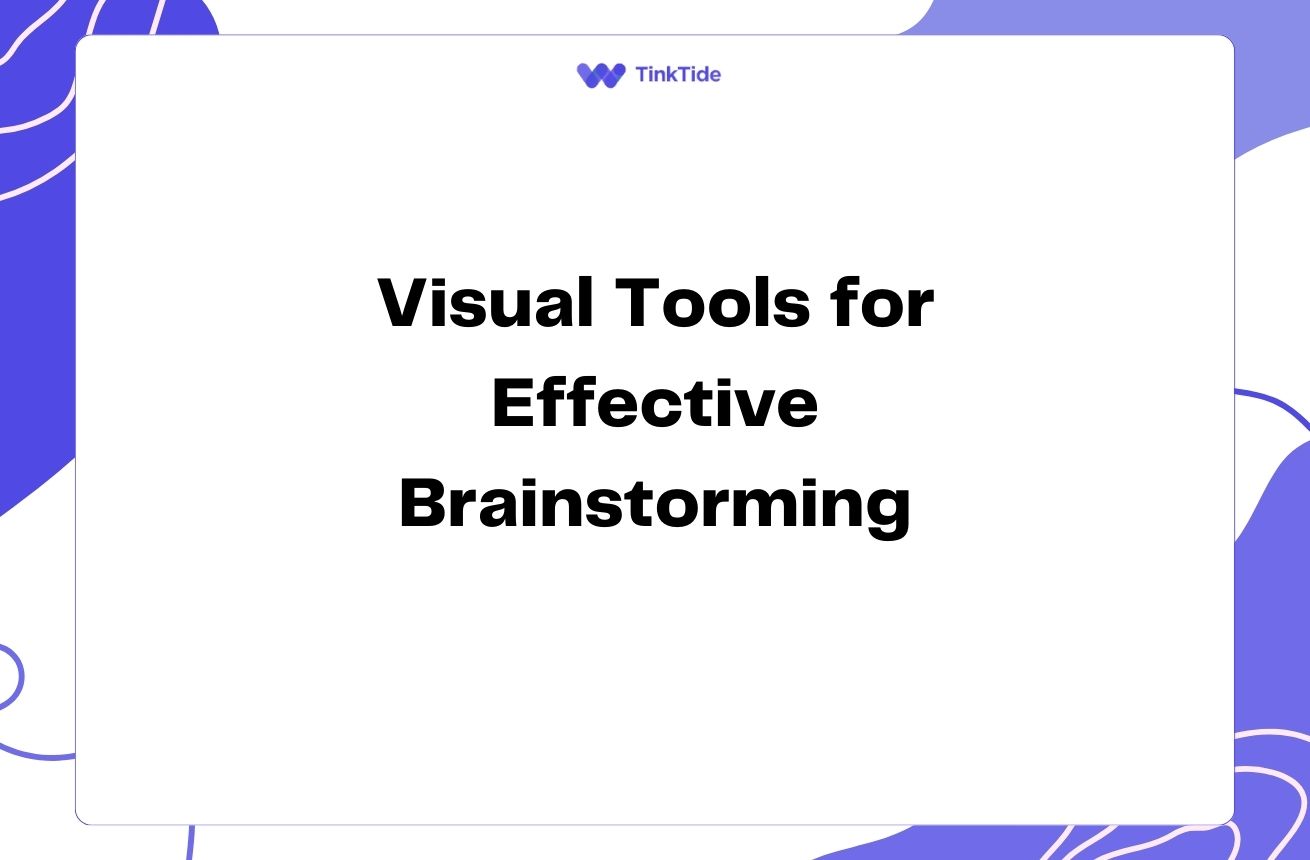Visual Thinking: Boosting Creativity in Marketing Strategy
The Power of Visual Thinking in Marketing
Visual thinking is a powerful tool that can revolutionize your marketing strategies. By harnessing the brain's ability to process visual information quickly, marketers can unlock new levels of creativity and develop more effective campaigns. This approach goes beyond simple imagery; it's about using visual methods to conceptualize, plan, and execute marketing strategies.
According to a study by MIT, the human brain can process images in as little as 13 milliseconds. This rapid processing makes visual thinking an invaluable asset in the fast-paced world of marketing. By incorporating visual elements into your strategic planning process, you can enhance understanding, foster innovation, and improve communication within your team.
Visual thinking in marketing isn't just about creating pretty graphics. It's a comprehensive approach that can help you break down complex ideas, identify patterns, and discover new connections. This can lead to more innovative marketing solutions and a competitive edge in your industry.
Key Benefits of Visual Thinking in Marketing
Incorporating visual thinking into your marketing strategy offers numerous advantages:
- Enhanced creativity and idea generation
- Improved communication of complex concepts
- Better retention and recall of information
- Increased engagement and collaboration within teams
- More effective problem-solving and decision-making
Visual Thinking Techniques for Marketers
There are several visual thinking techniques that marketers can employ to boost creativity and improve strategic planning:
1. Mind Mapping: This technique involves creating a visual diagram to explore and organize ideas. Start with a central concept and branch out with related ideas. Tools like MindMeister can help you create digital mind maps easily.
2. Storyboarding: Borrowed from the film industry, storyboarding helps visualize the customer journey or campaign flow. It's particularly useful for planning video content or social media campaigns.
3. Infographics: These visual representations of data and information can help simplify complex concepts and make them more digestible for your audience. Tools like Canva offer templates to create professional infographics.
4. Mood Boards: These collections of images, colors, and textures can help define the visual direction of a campaign and ensure consistency across different marketing channels.
Implementing Visual Thinking in Your Marketing Strategy
To effectively incorporate visual thinking into your marketing strategy, consider the following steps:
- Encourage team members to sketch ideas during brainstorming sessions
- Use visual aids in presentations and meetings
- Create visual representations of your marketing funnel or customer journey
- Develop visual brand guidelines to ensure consistency across all marketing materials
- Utilize data visualization tools to present complex marketing metrics in an easily understandable format
Overcoming Challenges in Visual Thinking
While visual thinking can greatly enhance marketing strategies, it's not without challenges. Some team members may feel uncomfortable with drawing or creating visual content. To address this, emphasize that artistic skill isn't necessary – simple sketches and diagrams can be just as effective as polished artwork.
Another potential hurdle is the time investment required to create visual content. However, the improved clarity and creativity that result from visual thinking often lead to time savings in the long run. Encourage your team to start small, perhaps by incorporating one visual thinking technique into each meeting or brainstorming session.
Lastly, ensure that your visual thinking efforts align with your overall marketing goals. While visuals can be engaging, they should always serve a strategic purpose and contribute to your marketing objectives.
Measuring the Impact of Visual Thinking
To gauge the effectiveness of visual thinking in your marketing strategy, consider tracking the following metrics:
- Time spent in strategy meetings and decision-making processes
- Number of new ideas generated during brainstorming sessions
- Team satisfaction and engagement levels
- Improvement in campaign performance metrics
- Client or stakeholder feedback on marketing presentations and proposals
Address common questions
Here are some frequently asked questions about visual thinking in marketing:
Do I need to be an artist to use visual thinking in marketing?
No, artistic skill is not necessary for effective visual thinking. Simple sketches, diagrams, and digital tools can all be used to visualize ideas and strategies.
How can visual thinking improve my marketing ROI?
Visual thinking can lead to more innovative and targeted marketing strategies, clearer communication within teams, and better understanding of complex data. This can result in more effective campaigns and improved ROI.
What tools are available for visual thinking in marketing?
There are numerous tools available, including mind mapping software like MindMeister, design platforms like Canva, and data visualization tools like Tableau. Many project management tools also incorporate visual elements.
How can I introduce visual thinking to a team that's resistant to change?
Start small by incorporating simple visual elements into meetings or presentations. Demonstrate the benefits through improved clarity and engagement. Provide training or resources to help team members feel more comfortable with visual thinking techniques.
Can visual thinking be applied to all aspects of marketing?
Yes, visual thinking can be applied across various marketing activities, from strategy development and campaign planning to data analysis and reporting. It's particularly useful for understanding customer journeys, brand positioning, and competitive landscapes.
Provide additional resources
The Back of the Napkin
A book by Dan Roam on solving problems and selling ideas with pictures
Visual Thinking for Design
A comprehensive guide on applying visual thinking to design processes
Canva Design School
Free design courses and resources to improve your visual thinking skills
Data Visualization Society
A community dedicated to data visualization, offering resources and networking opportunities
Mural
A digital workspace for visual collaboration, useful for remote marketing teams
Embracing Visual Thinking in Your Marketing Strategy
Visual thinking is a powerful tool that can transform your marketing strategies, fostering creativity, improving communication, and driving innovation. By incorporating visual elements into your planning and execution processes, you can develop more effective campaigns and stay ahead in the competitive marketing landscape.
Remember, the goal of visual thinking is not to create perfect artwork, but to enhance understanding and spark new ideas. Start small, experiment with different techniques, and gradually integrate visual thinking into your marketing workflow.
As you embrace visual thinking, you'll likely find that it not only improves your marketing outcomes but also makes the process more engaging and enjoyable for your team. So grab a pen, open a digital canvas, and start visualizing your way to marketing success!
Elevate Your Marketing with Visual Thinking
Ready to transform your marketing strategy with visual thinking? Try our tools and resources today!
Start Your Free Trial
